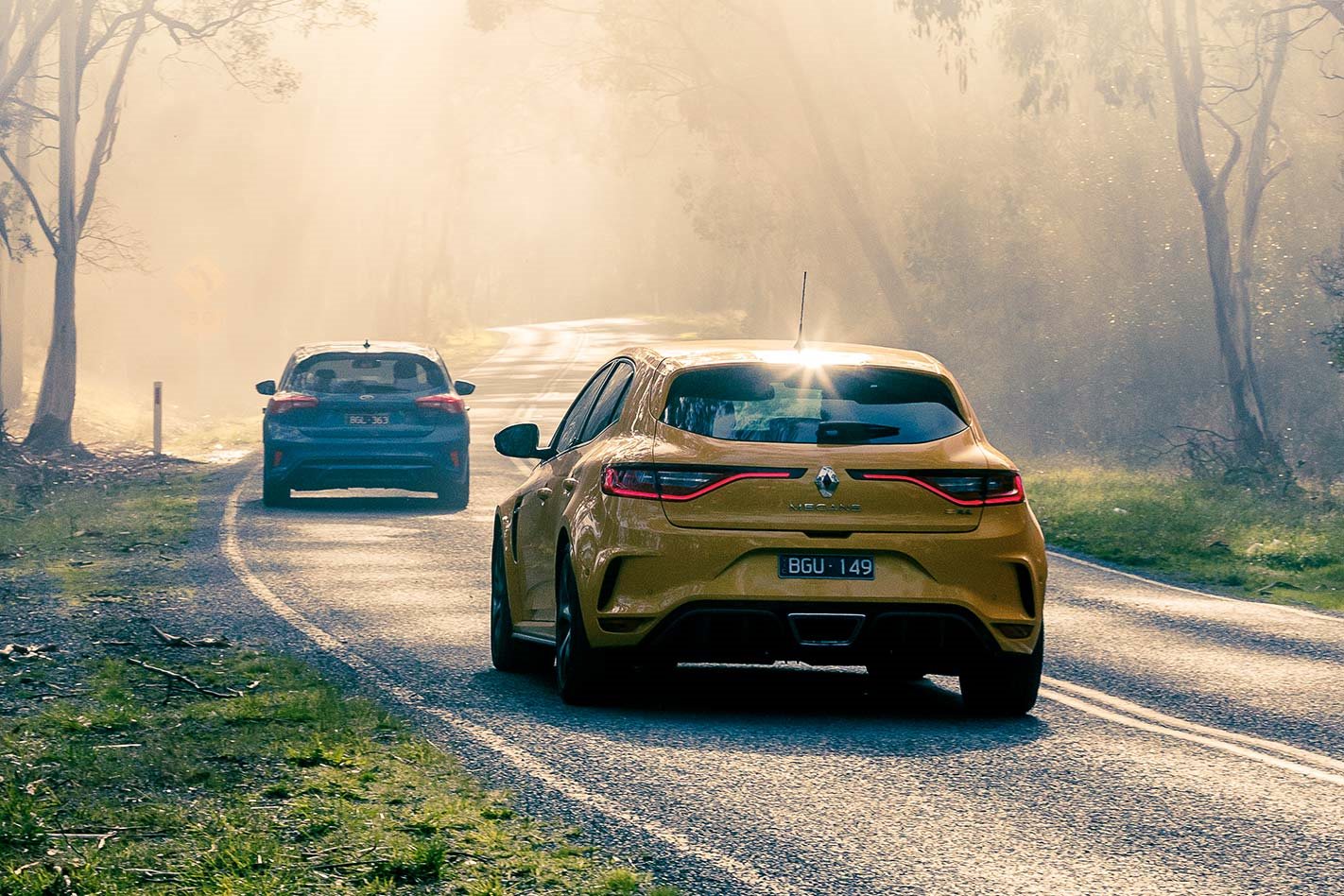If you believe it’s Nurburgring lap records that drive natural selection in the front-drive hot hatch world, that’s okay. We too enjoy knowing lap times to the tenth and often squeeze on-board videos into the last minutes of our lunch break.
But we’re also wise to their role in marketing a brand. As cynical as that sounds when almost every hot hatch is signed off at the famous track, you can’t drive an actual ’Ring record car off the showroom floor in like-for-like guise – unless you bring your own semi slicks or roll cage.
The thing is, as far as car companies are concerned, the last hot hatch will be left standing on a different battleground. Like the one under our contenders here.
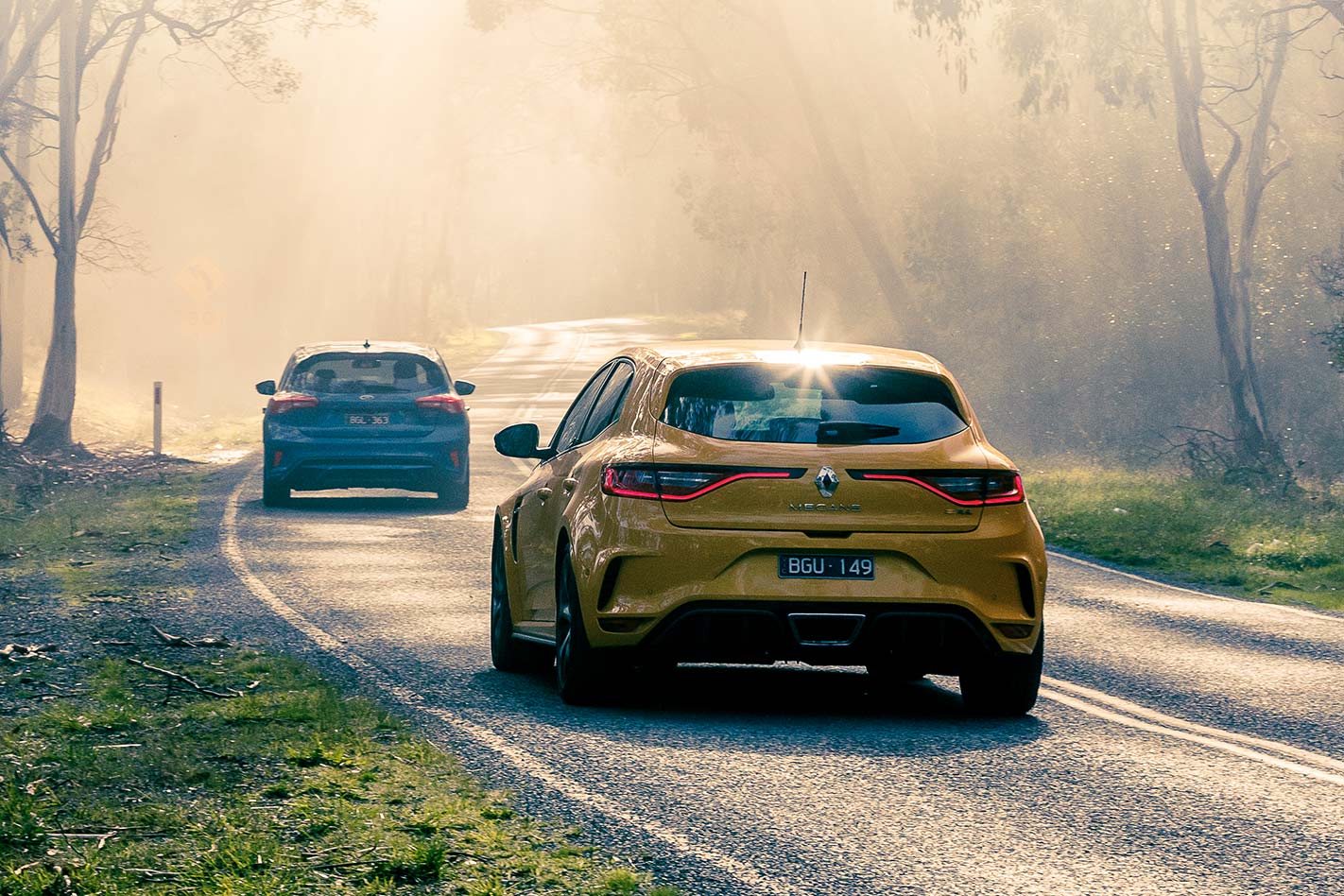
What makes them so special? Right now the Renault Megane RS and Ford Focus ST are the only hot front drivers with automatic transmissions. We’ve been told that when it comes to a manual or automatic, buyers choose the latter four out of five times. So while a Honda Civic Type R is probably the best front driver, or even hot hatch, you can buy, these two are what people will actually get for the next while.
Hyundai’s i30 N dual-clutch is coming… it keeps saying. Meanwhile the VW Golf GTI, for all intents and purposes, is awaiting its eighth generation. Renault’s Megane RS has used an Efficient Dual Clutch (EDC) since 2018 but Ford now wades into these waters with its first-ever automatic Focus ST.
Plenty of similarities between these two promise a blood bath. Four hundred and twenty Newtons apiece, for starters, through the front wheels. Along with front suspension built around trick limited slip differentials and specially engineered torque-steer-fighting mounting points.
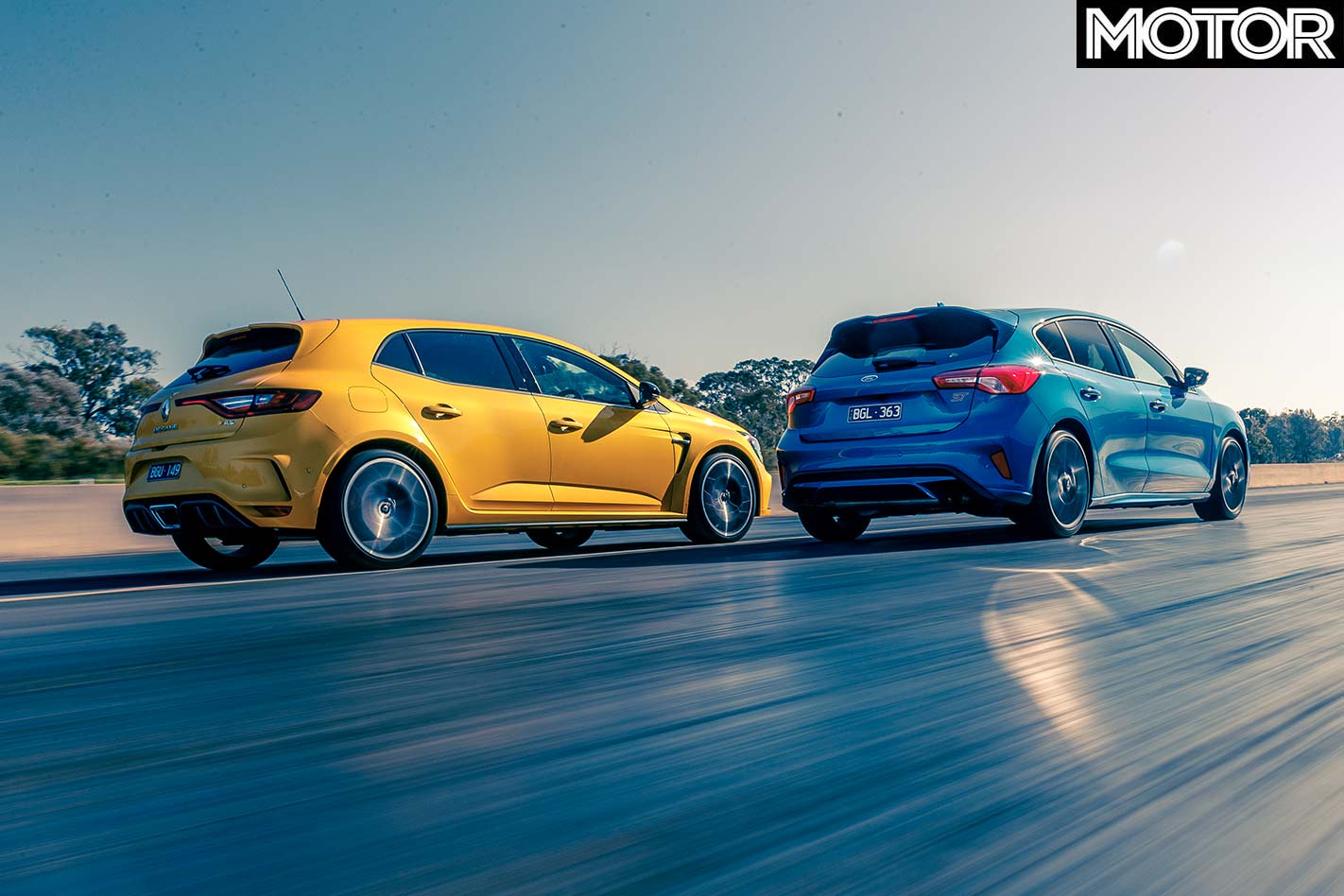
Both use inline-4s with twin-scroll turbochargers. Each seats five, has five doors and measures just under 4.4 metres long. Both ride on 19-inch wheels with specific performance rubber. And both have been sent from Europe to try satisfy a well-established Aussie penchant for front-drive hot hatches.
Given the Trophy’s birthplace in Dieppe is only hours from Paris, it’s no surprise it catches your eye with a sense of style and aggression that’s missing on the Focus. Its exclusive Renault Sport bodywork pumps guards to thrust tyre tracks 32mm and 37mm further out than the ST’s. That genuine rear diffuser, along with a ground-hugging front lip, also set off its heavily stylised LED lights.
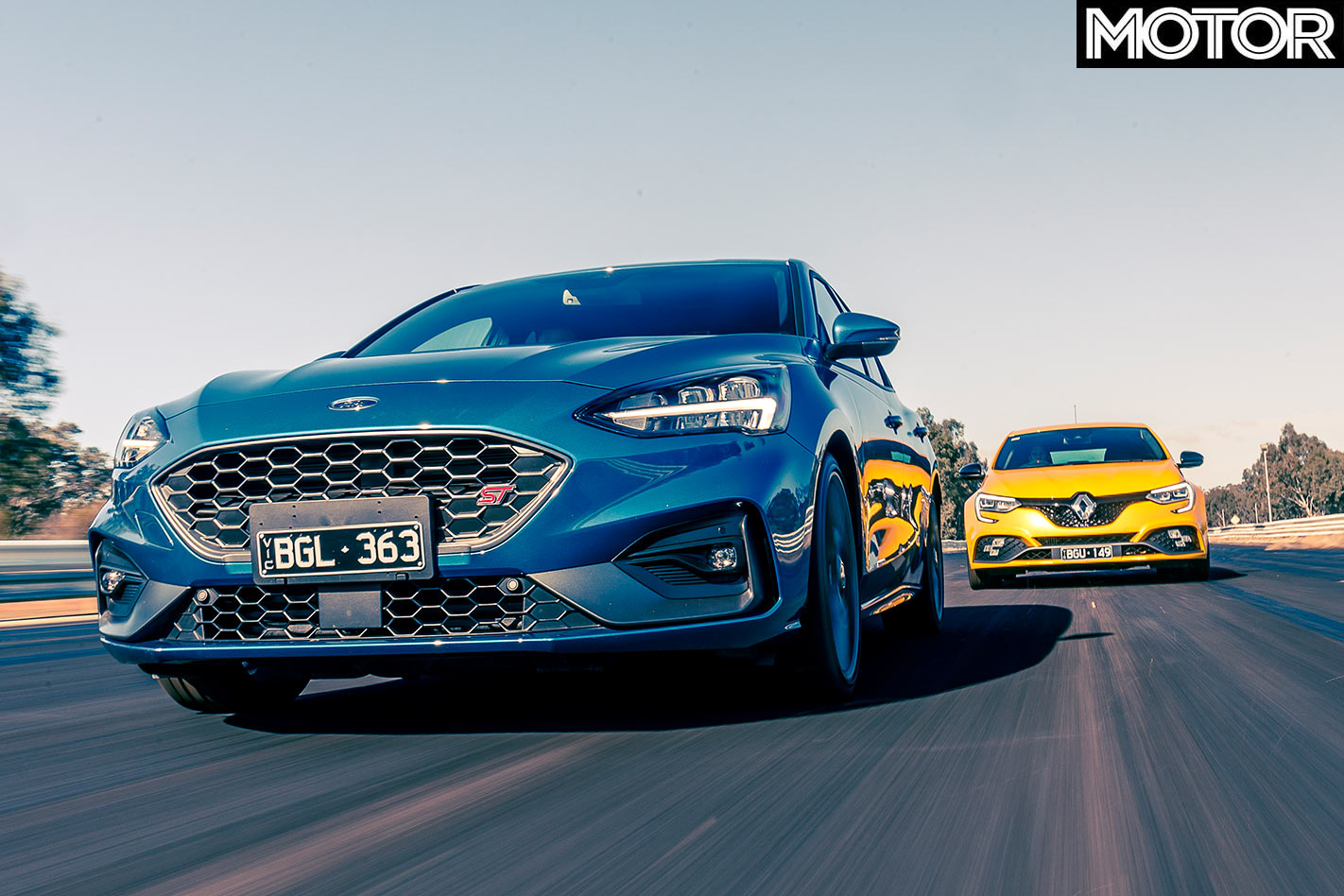
Designer fashion’s not cheap, though, and it doesn’t help that Renault could only supply the RS300 Trophy EDC. It tops the range at $55,990. For the cash, though, you get special design wheels, bi-material front brake discs, a lowered seating position and an active exhaust. It also squeezes 221kW/420Nm from its 1.8 litres.
You can buy a softer Sport chassis for $50,490 with the 205kW/390Nm RS280 EDC powertrain. And, honestly, it might have been the better pick on price. That is, however, until one learns that if you want a Torsen LSD in your six-speed dual-clutch Trophy (and you do), you can only get it with the stiffer Cup chassis. We’ll get to why that’s so important in a moment.
Our German-born ST, meanwhile, is fresh from an Australian launch and offers an automatic in the truest sense. It borrows an eight-speed torque converter from the ST-Line, but swaps in new gear ratios, minus one, to match its grunty 2.3 litre.
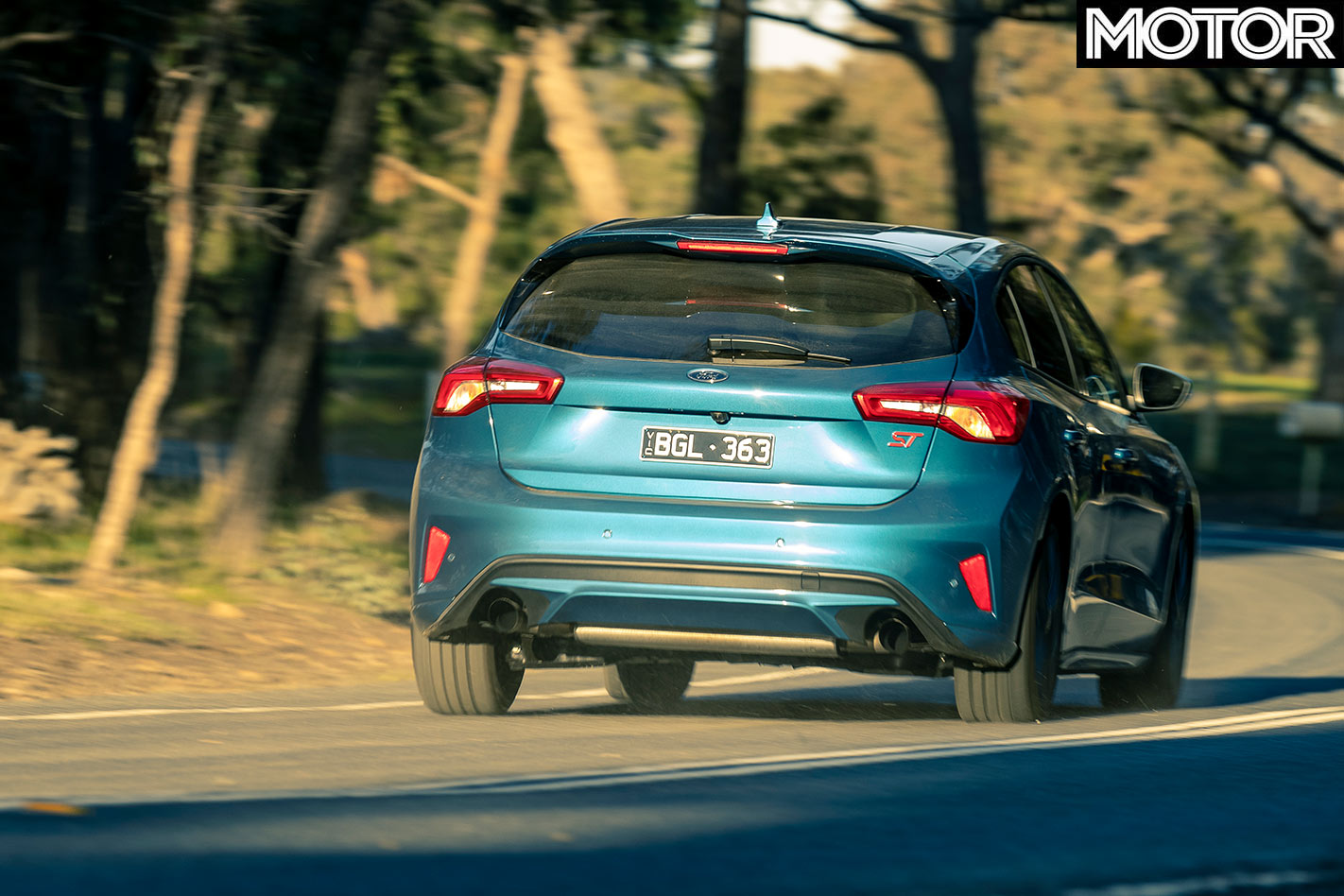
Ford admits it saved money by avoiding a dual-clutch transmission. So you’ll only need $44,690, or as much as the six-speed manual ST, to nab one. The real cost, though, is on the scales, where it adds 26kg; or also because it ditches the manual’s launch control software.
But the ST proves that’s no drama at Heathcote Raceway in dry, cool Victorian weather. After building up 2250rpm against the stall, it’s obvious it doesn’t need launch control to hit its 6.0sec 0-100km/h claim. The 235mm Michelin Pilot Sport 4 S tyres waste little time with wheelspin – often the problem with manual front-drivers – and the shift mapping in sport ESC dispatches the first two gears well before the 6625rpm redline.
By contrast Renault’s launch control system is less intuitive. After vital temperatures warm up, pull both paddles and three green lamps light up the dash. It next tries to contain the fury that hard-charging 1.8-litre unleashes on its wider 245mm Bridgestone Potenza S001s, but the revs hang in first gear for a moment too long.
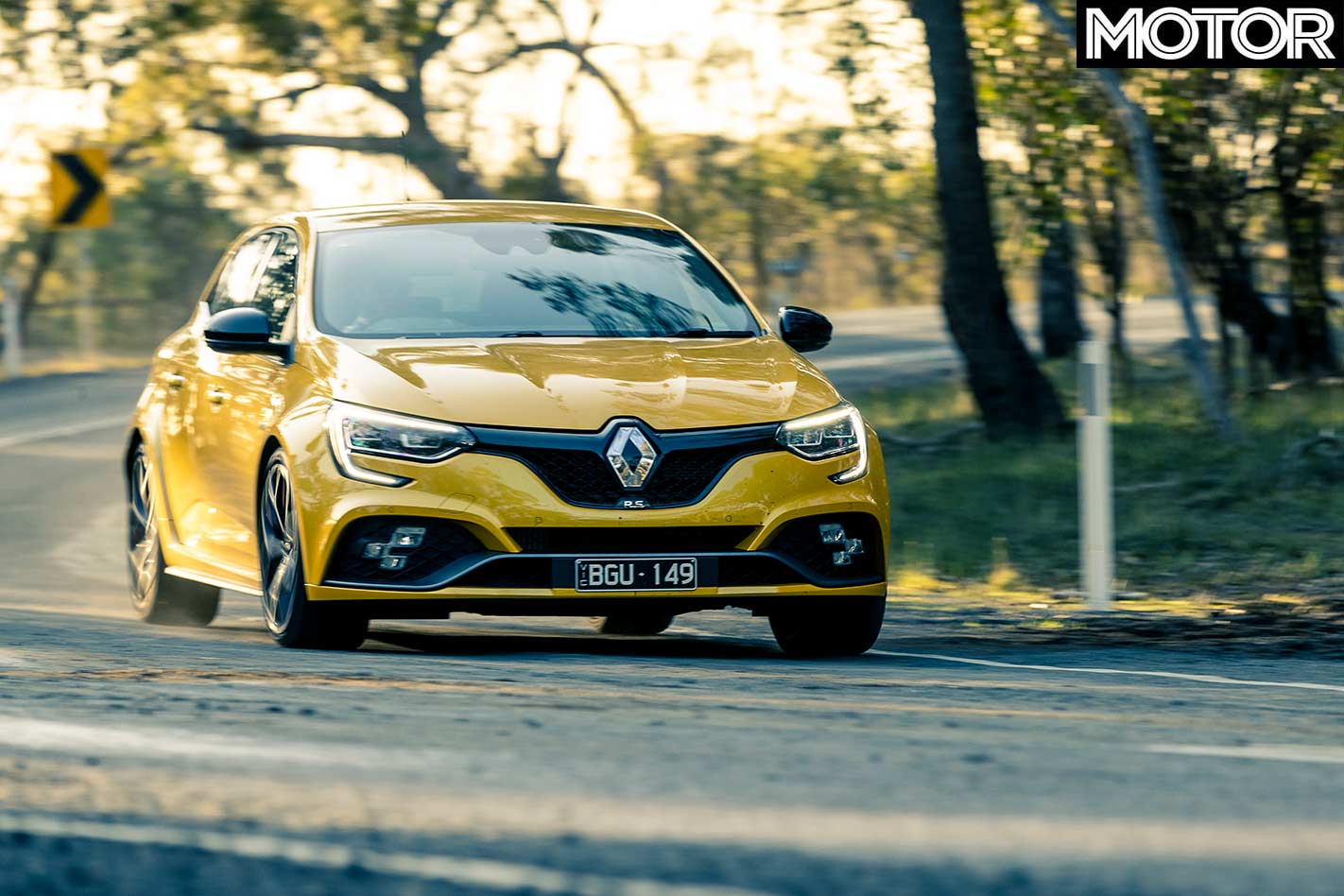
Upshifting knocks it out of this daze. But you must hold each gear until the 6875rpm cut-out or you risk falling out of the turbocharged powerband. And while these two are neck and neck up until 80km/h, after that it’s a wash in the Trophy’s favour. It just never lets up. It tags 100km/h in 5.90sec but only once you factor in its slick dual-clutch, a 100kg-plus advantage and 15 extra kilowatts can you grasp how hard the Trophy punches at the strip’s fast end. It storms across the 400m line in 13.92sec and 6.5km/h faster.
That shouldn’t take away from the ST’s potency, though. The automatic and electro-hydraulic LSD work excellently to find traction. Longer gearing in second might even see it match, or even beat, the Trophy or a manual ST to 100km/h from rest. There’s only a bit in it for shift speeds, as well.
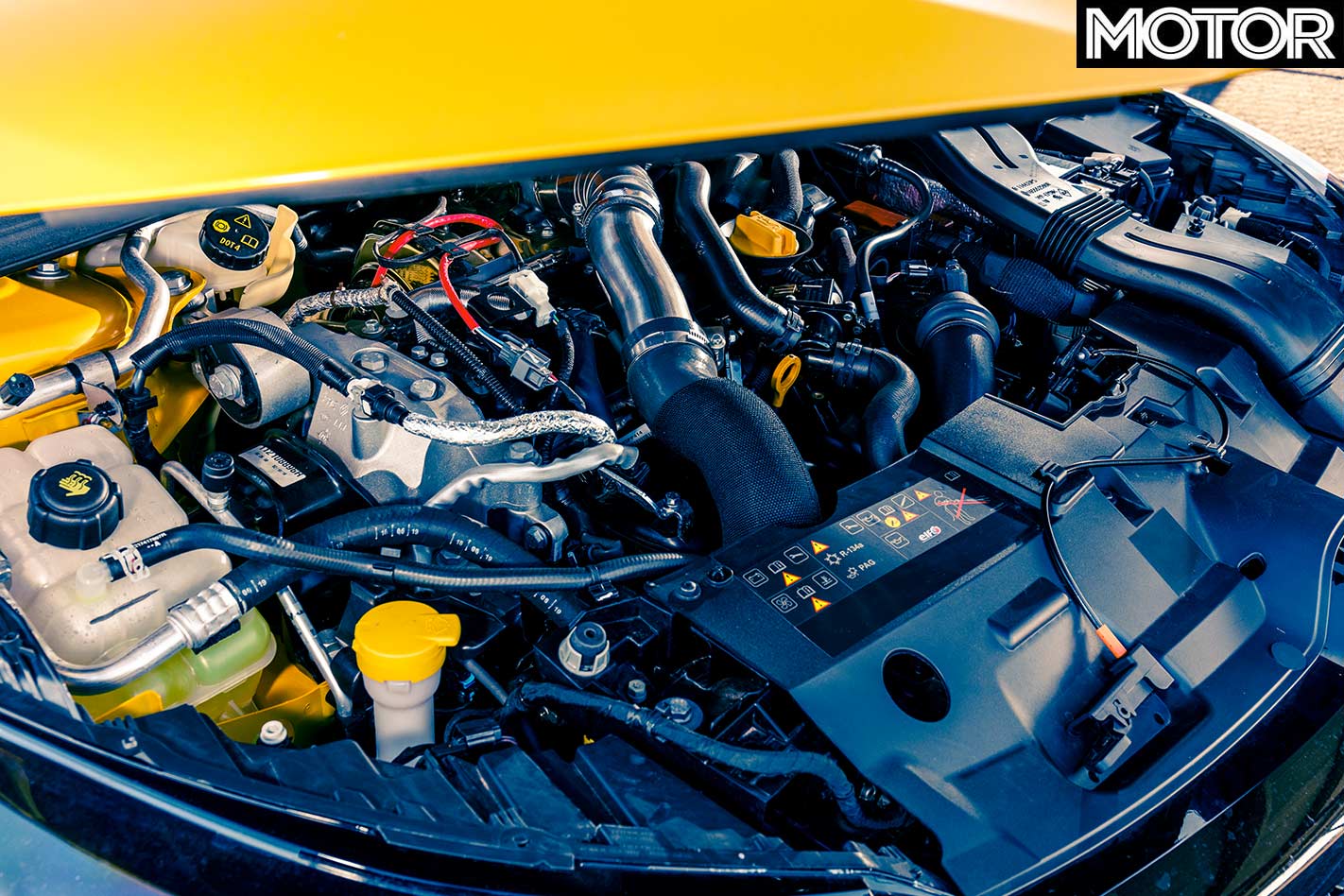
That long-stroke 2.3-litre dishes out good mid-range torque. It spreads its 420Nm across 3000-4000rpm and its ‘anti-lag’ tech – that keeps the throttle body open after you’ve lifted off – sharpens response. The sound generation device also blasts a decent, almost natural-sounding warble into the cabin and the engine mapping occasionally ignites fuel to squeeze out pops on the overrun.
But the Trophy’s 1.8-litre four is packed dense with more muscle. Its dual-entry intake, active exhaust and shorter stroke allow it to pull harder in its upper revs, while the Trophy’s special ceramic turbine wheel broadens torque delivery. It’s exotic, gives more and uses that snappier dual-clutch to fire a rifle-crack at the ST in its wake.
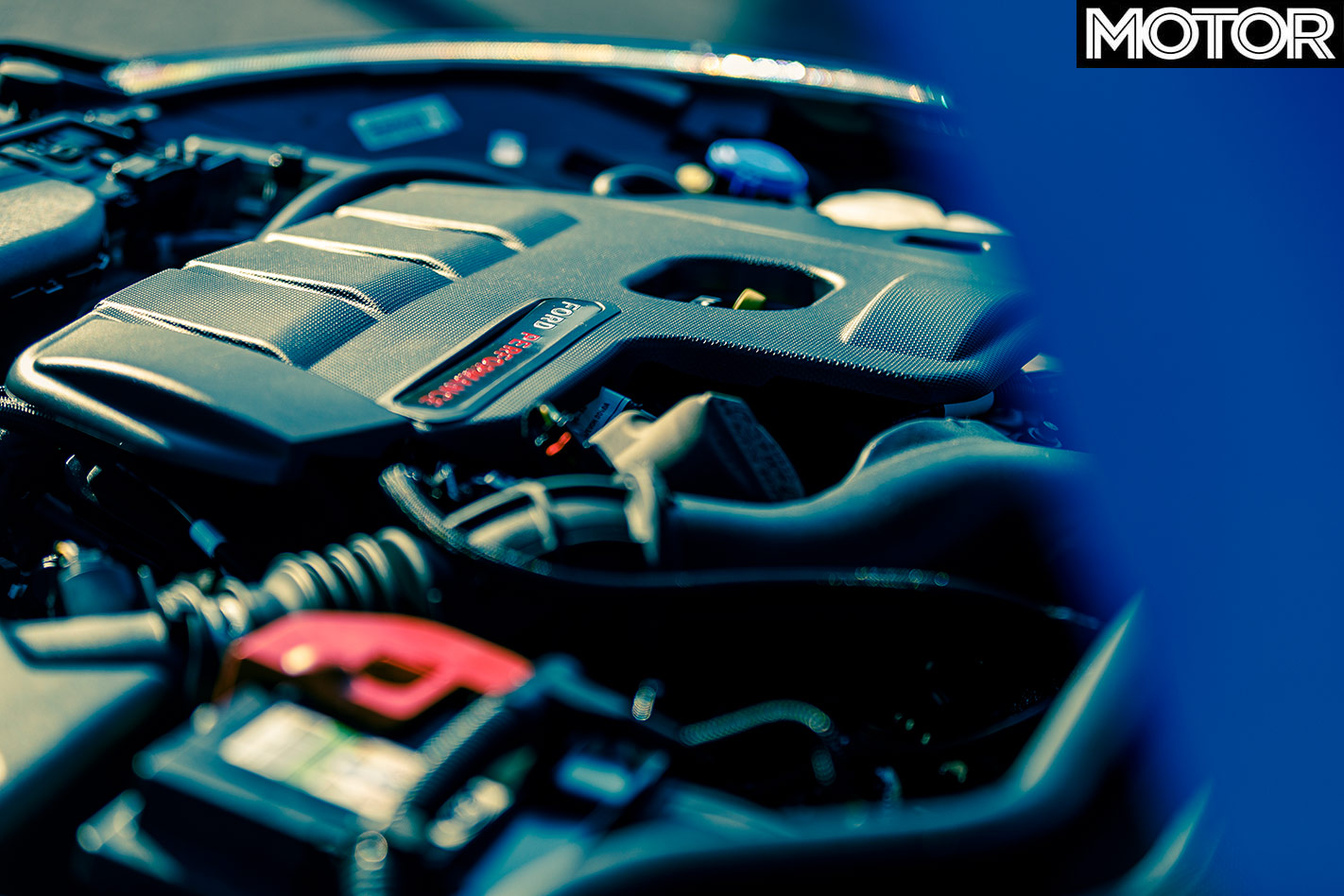
After the Trophy takes the drag strip we dash across country roads to assess our pair at cruising speeds. What’s obvious, though, is the Trophy’s Cup chassis has done it no favours. While drive-mode customisation can adjust everything from steering weight, powertrain response, exhaust noise and even the rear steering (which we’ll get to later), without adaptive damping the ride is one size fits all.
Uprated springs, dampers and a rear torsion beam set a high intensity and transmit everything that rolls under its Bridgestones. Hydraulic bump-stops, that Renault says are like ‘dampers within a damper’, slow down fast compressions and save it from crashy big wheel deflections. But we’d still warn passengers before big trips.
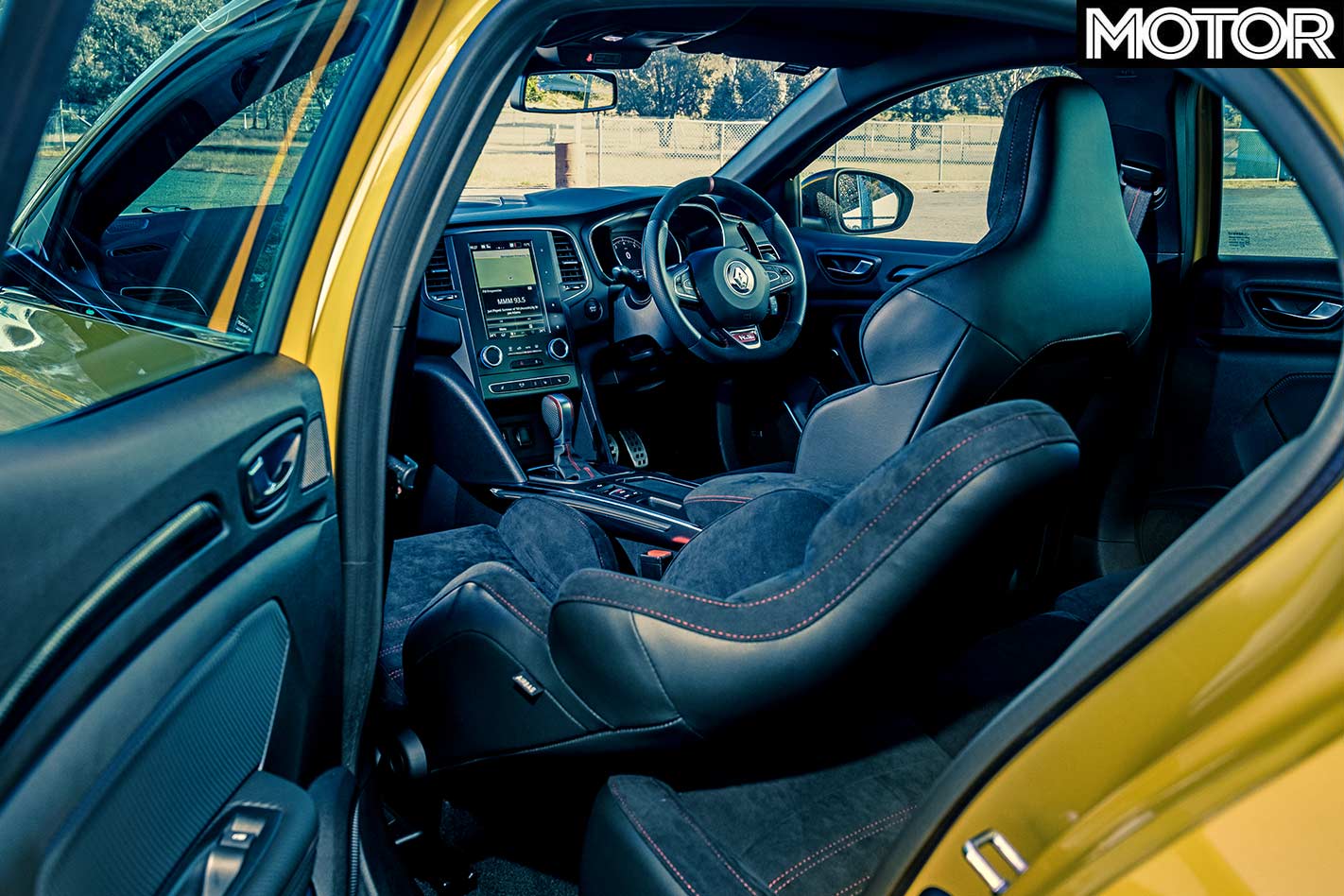
The ST features three-setting adaptive dampers and independent suspension all around. In Normal mode it reminds us of the Megane’s Sport chassis, where backing off the damping 20 per cent makes the ride more bearable than the Trophy by almost half. It’s still firm. Multi-link rear suspension adds a touch of sophistication and filters out imperfect roads with more finesse. Sport mode, however, stiffens the ST’s ride like it’s tipped concrete into the damper tubes, while Race mode is for the smoothest of racetracks only.
Ford says the electrical architecture in the Focus’s C2-platform doesn’t offer the ability to separate the ST’s systems into different modes. Weirdly, the steering wheel’s ‘S’ button can engage Sport, but only pressing ‘mode’ cycles out of it. For any fast driving, though, the damping needs to be amped for you to experience its potential.
It’s more willing to shift weight around in Sport mode and that complements a steering action which is wonderfully linear in how it weighs up or points into a corner. There’s simply no slack. Just point and the car responds. Or stab the brakes, lighten the rear and adjust your line. It’s balletic.
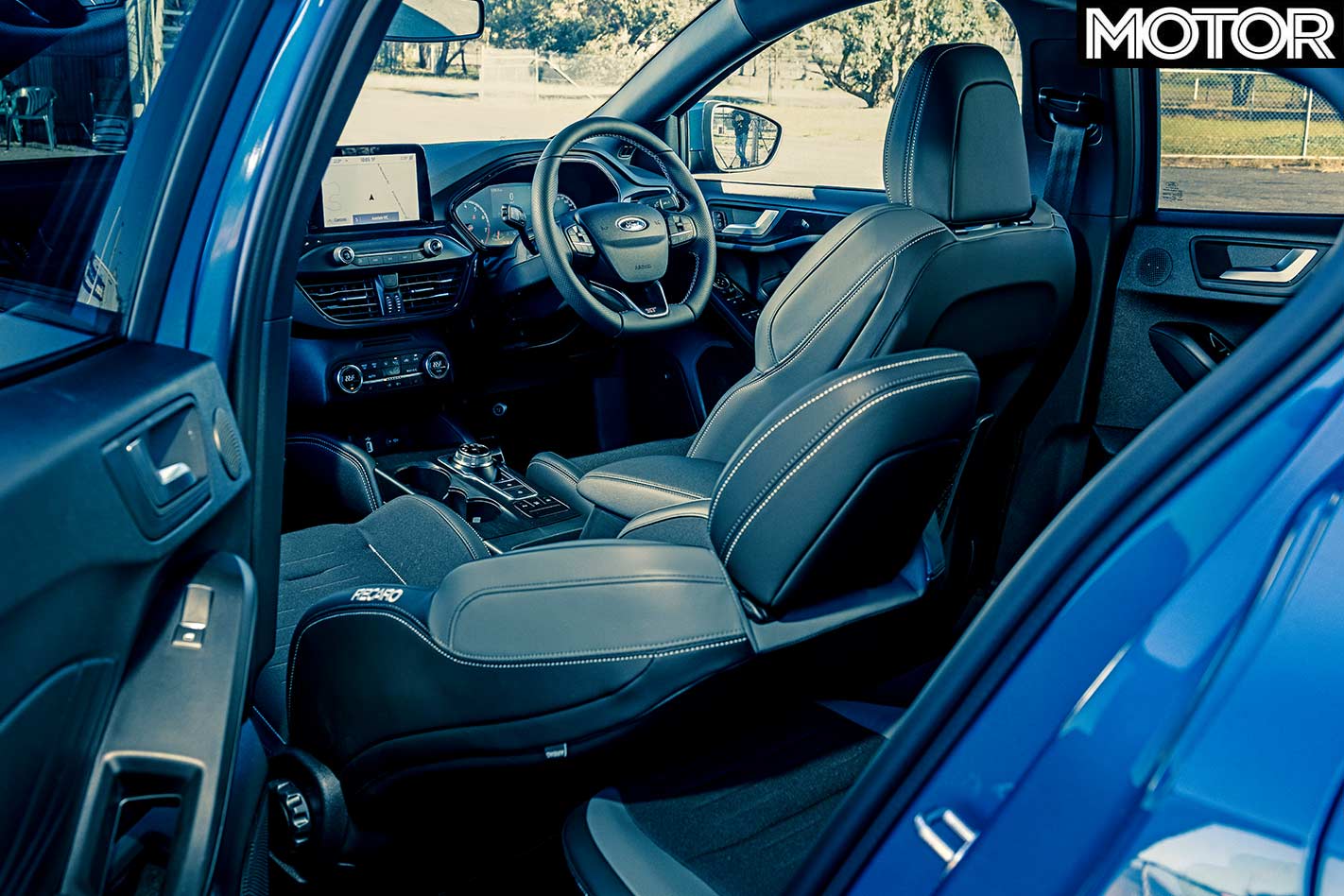
The Trophy is as athletic, but its laces feel tied together. While the steering is slightly more artificial in weight its quick ratio holds a tight grip of its chassis. It also summons tremendous grip on dry tarmac.
But its 4Control rear-steer system spoils any chance of finding a true, meaningful connection. When the rear wheels steer the opposite way to the fronts it becomes hard to predict. The Trophy can suddenly turn-in too fast, or delay letting go, requiring you to slow steering inputs or rush them.
Both cars find incredible traction under power. Drop the right pedal and the ST’s BorgWarner e-LSD turns that into explosive speed. Meanwhile, the Trophy’s mechanical unit relies on the fancy dual-axis front hubs, that split the knuckle’s steering and suspension duties, to sniff out grip.
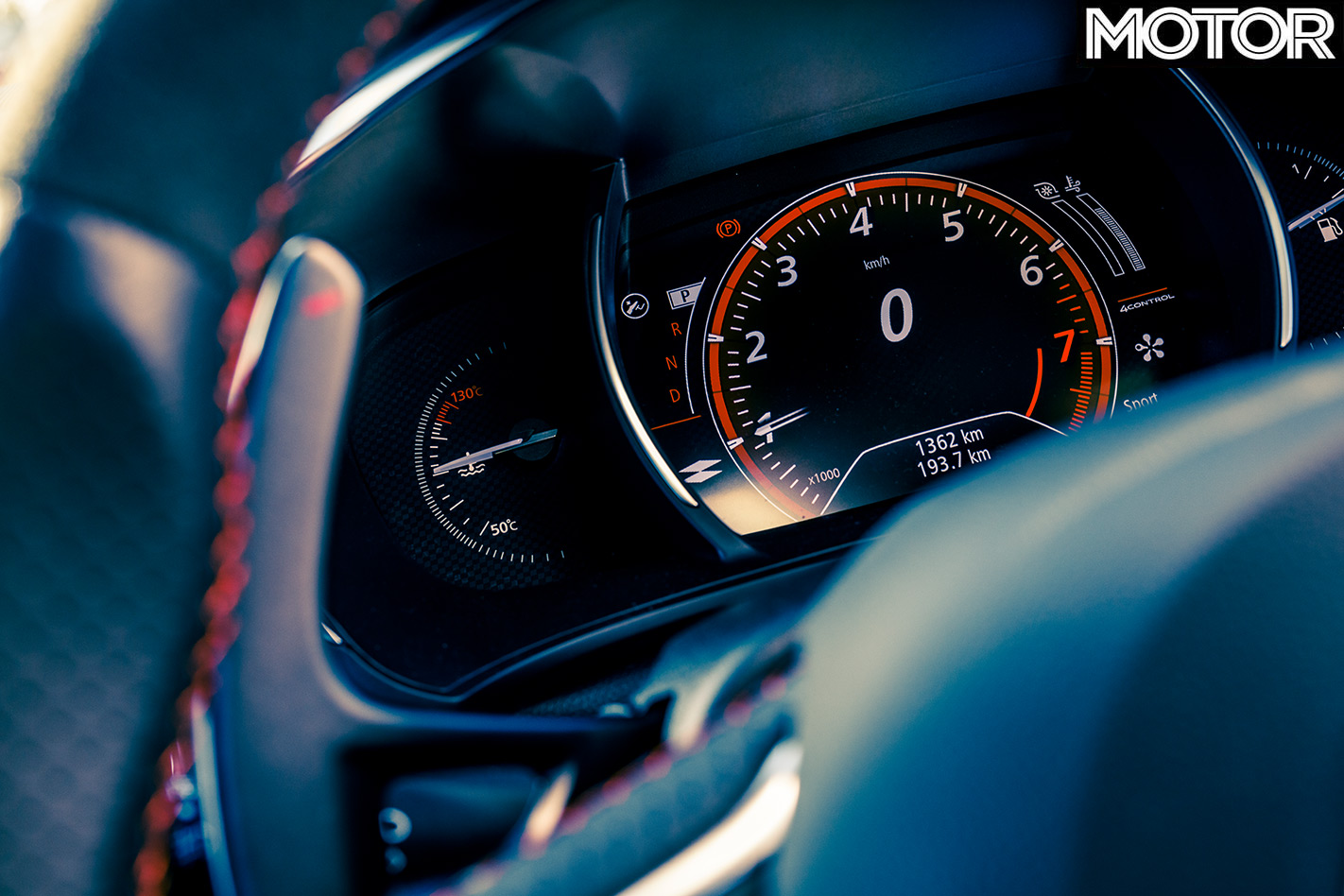
As you tear away there’s a whiff of torque steer about each system, with the ST’s special software making it more obvious. Yet in braking zones the ST trumps the Trophy on brake feel and power. And testing revealed the Trophy needed almost another two metres to stop from 100km/h.
Transmission-wise, the ST’s torque converter acquits itself well. It obeys downshifts under power, upshifts swiftly and is mapped well when left to its own devices. Only thing we’re unsure about is the new rotary gear selector dial that has taken the place of a traditional lever.
Then again, in the Trophy it’s just as easy to overshoot reverse into park with its lever and mounting its gorgeous metal shift paddles on the steering column is a worse mistake than leaving the ST’s as plastic.
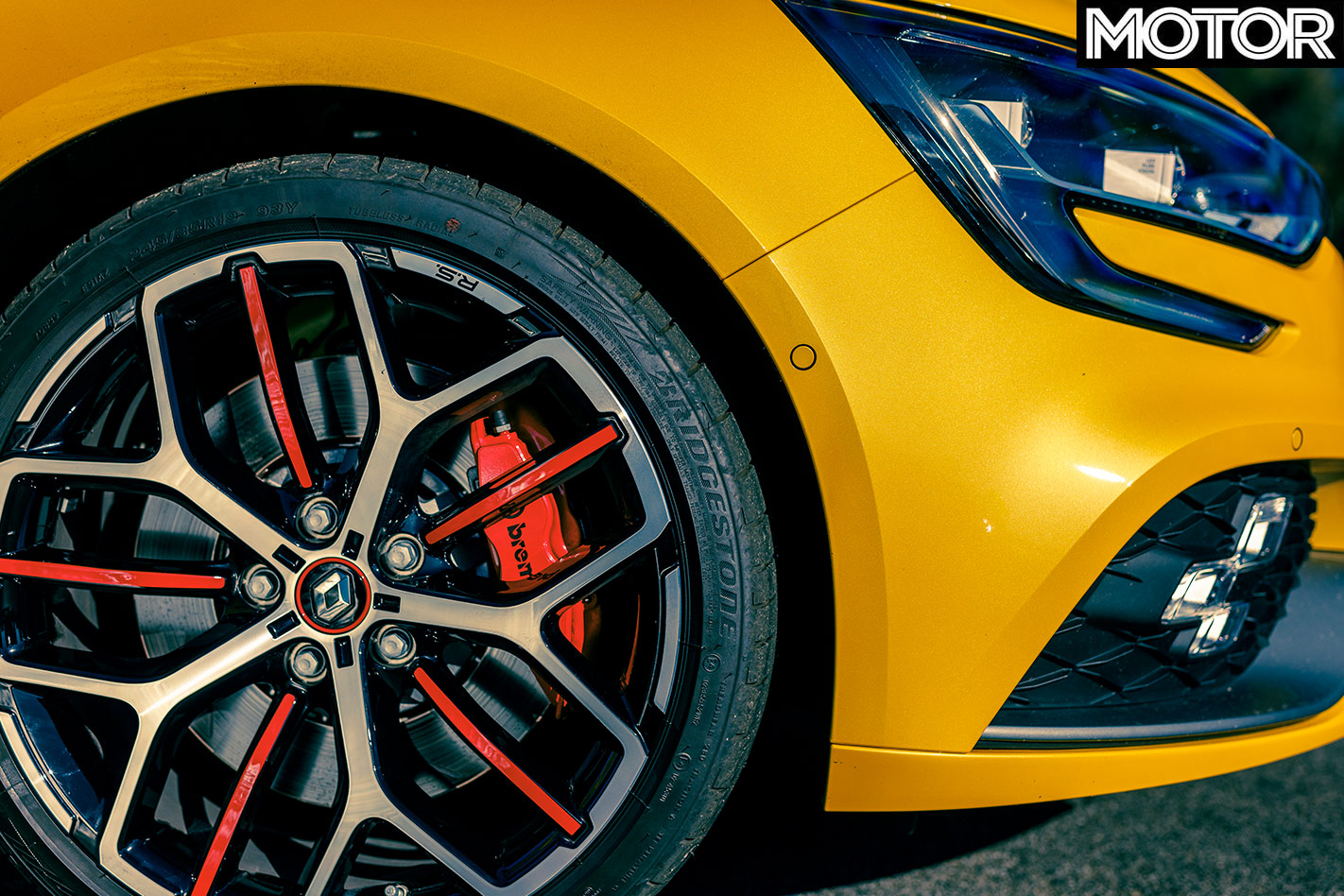
Their tacky feel hints Ford built the ST to a price. But it’s also obvious that money was spent well. The admittedly firm suspension has a sophisticated touch missing in the Trophy. The same goes for the steering, brakes and NVH. The auto is no deal breaker, either. In a way, the ST is what Renault wanted the Megane RS to be, a mature performance hatch with teeth only when it needs them.
The Trophy, meanwhile, dominates in some ways. The powertrain is a small but furious fighter with the soundtrack and transmission to match. The front-end, too, is a class act offering tremendous levels of grip and response. It’s also a nice place to sit, with materials that echo its upmarket position.
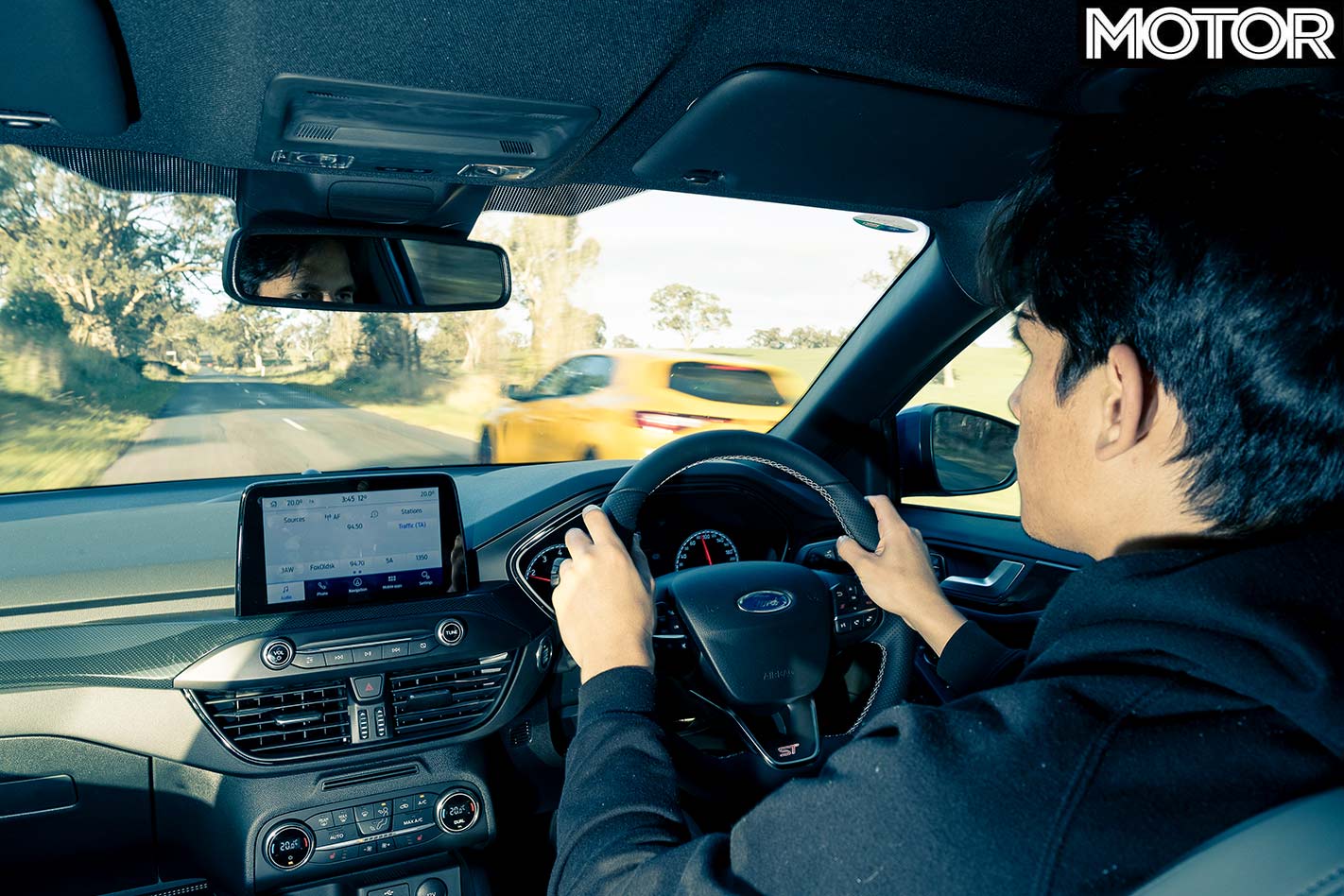
Ultimately the performance package falls short of an integrated whole. We know the Trophy had a reputation to uphold. And like before, it’s tough and pretty. It’s fancier feeling inside. We also love how the drivetrain feels race-bred. Unfortunately, though, its ride does too. While its handling is confused and it’s priced a little too far over its head.
Only Renault diehards will look past the Focus ST. It’s simply more well rounded. But it won’t be long until some new blood will challenge its good standing. Stay tuned.
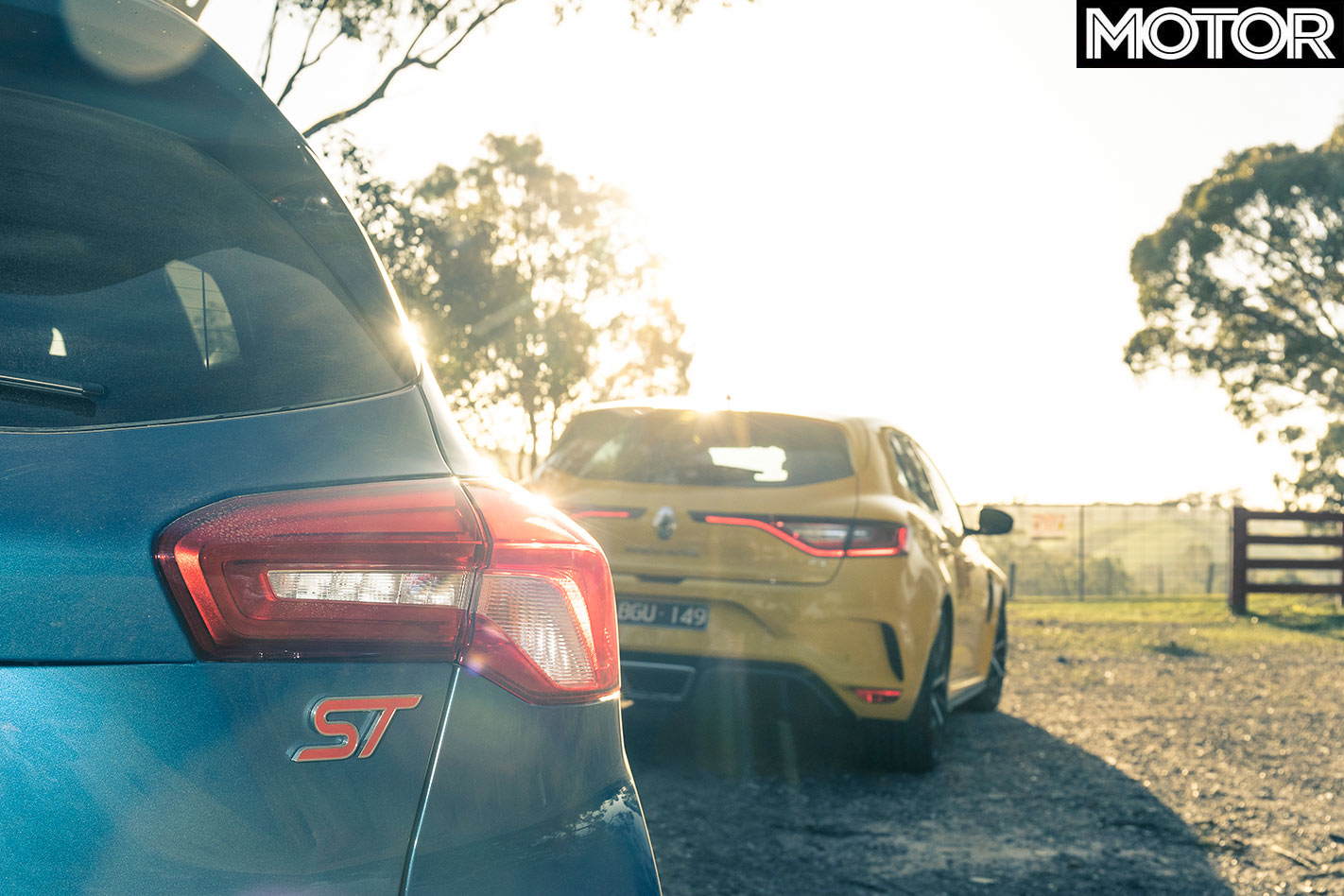
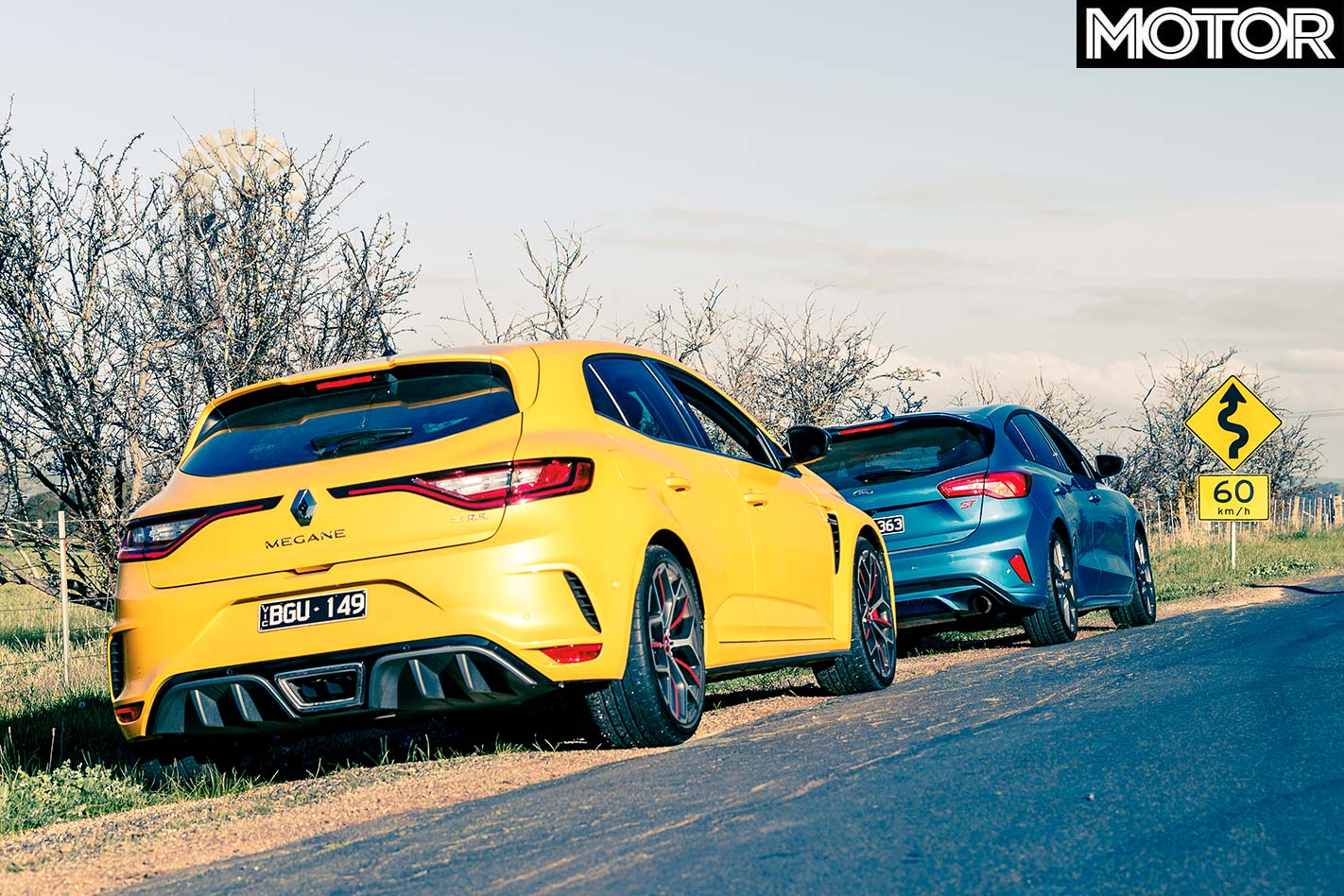
| u00a0 | Ford Focus ST | Renault Megane RS300 |
| 0-10km/h | 0.54 | 0.52 |
| 0-20km/h | 1.1 | 1.15 |
| 0-30km/h | 1.63 | 1.7 |
| 0-40km/h | 2.12 | 2.17 |
| 0-50km/h | 2.65 | 2.72 |
| 0-60km/h | 3.21 | 3.27 |
| 0-70km/h | 3.78 | 3.84 |
| 0-80km/h | 4.42 | 4.41 |
| 0-90km/h | 5.18 | 5.09 |
| 0-100km/h | 5.97 | 5.9 |
| 0-110km/h | 6.83 | 6.64 |
| 0-120km/h | 7.74 | 7.49 |
| 0-130km/h | 8.77 | 8.46 |
| 0-140km/h | 9.77 | 9.67 |
| 0-150km/h | 11.44 | 10.82 |
| 0-160km/h | 13.07 | 12.12 |
| 0-170km/h | N/A | 13.57 |
| 0-400m | 14.09sec @ 165.7km/h | 13.92sec @ 172.2km/h |
| 80-120km/h | 3.31sec | 3.08sec |
| 100-0km/h | 33.83m | 35.72m |
| SPEED IN GEARS | u00a0 | u00a0 |
| 1st | 60km/h @ 6625rpm | 59km/h @ 6875rpm |
| 2nd | 93km/h @ 6625rpm | 92km/h @ 6875rpm |
| 3rd | 146km/h @ 6625rpm | 134km/h @ 6875rpm |
| 4th | 193km/h @ 6625rpm | 183km/h @ 6875rpm |
| 5th | 250km/h @ 5925rpm* | 238km/h @ 6875rpm* |
| 6th | 250km/h @ 4450rpm* | 260km/h @ 6120rpm* |
| 7th | 250km/h @ 3675rpm* | N/A |


